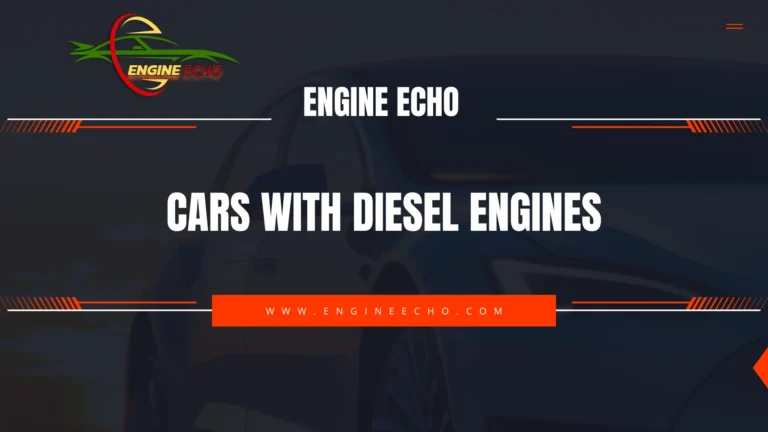What to Do When Engine Power Is Reduced in a Chevy

Key Takeaways:
- Common Causes: Throttle body issues, fuel delivery problems, sensor malfunctions, and exhaust system blockages are common reasons for reduced engine power in Chevy vehicles.
- Troubleshooting Steps: Identifying the cause requires tools like an OBD-II scanner and checking components like the throttle body, sensors, and fuel system.
- Temporary Fixes: Resetting the engine control module (ECM) and cleaning components like the throttle body can sometimes temporarily resolve the issue.
- Preventive Maintenance: Regularly cleaning the throttle body, replacing sensors, and keeping the fuel and exhaust systems clean help prevent engine power issues.
- When to Seek Help: DIY fixes may not always work, and professional help might be required for issues like fuel delivery problems or transmission malfunctions.
Introduction
There’s nothing quite like the sinking feeling you get when your Chevy suddenly loses power, especially when you’re on the highway. The “Engine Power is Reduced” warning can catch you off guard and leave you scrambling to figure out what’s wrong. Trust me, I’ve been there. This warning might seem like a small issue, but it actually means something more serious is going on. Having dealt with it myself, I want to share what I’ve learned to help other Chevy owners avoid the headache I went through.
1. Understanding the “Engine Power is Reduced” Warning in a Chevy
What Does It Mean?
When your Chevy’s onboard computer detects a problem that might affect engine performance, it limits engine output to protect other components from potential damage. You’ll notice an immediate drop in acceleration and speed, and that’s your cue to address the issue before it gets worse. From personal experience, ignoring this warning is never a good idea—it’s always better to nip it in the bud.
Models Affected
I’ve seen this issue crop up across a range of Chevy models. Some of the more commonly affected include:
- Chevy Silverado
- Chevy Malibu
- Chevy Impala
- Chevy Equinox
These models, especially the recent ones, have sensitive systems that closely monitor engine performance, making them more prone to this kind of warning.
2. Common Causes of Reduced Engine Power in Chevy
1. Throttle Body Issues
The throttle body is usually the troublemaker here. It controls how much air your engine gets, and when it gets clogged up or stops working right, your car just won’t perform like it should. I remember the first time my Chevy Malibu hesitated every time I tried to accelerate—it turned out to be a dirty throttle body. After a quick cleaning, it was back to normal.
- Signs: Hesitation during acceleration, erratic idle, or sluggish performance.
- Solution: Cleaning the throttle body can often fix the issue.
2. Faulty Accelerator Pedal Position Sensor
This little sensor plays a big role by telling the ECM how far you’ve pressed the gas pedal. When it malfunctions, your car doesn’t respond to your foot the way it should. I’ve had this happen before, and the delay between pressing the pedal and feeling the car move was frustrating.
- Signs: Delayed response when pressing the gas pedal or a complete lack of acceleration.
- Solution: Replacing the sensor is usually a straightforward fix.
3. Malfunctioning Mass Airflow Sensor (MAF)
A faulty MAF sensor can wreak havoc on engine performance. This sensor measures the air coming into the engine to ensure the right air-to-fuel mix. I had my MAF sensor fail once, and it felt like my car had lost all its power. Luckily, a quick replacement brought it back to life.
- Signs: Poor fuel economy, stalling, or jerking while accelerating.
- Solution: Cleaning or replacing the MAF sensor.
4. Dirty or Clogged Air Filters
This one might seem simple, but it’s critical. A clogged air filter restricts airflow to the engine, which reduces power. After driving through dusty roads one summer, my air filter was so clogged that my engine felt sluggish. Replacing it made an immediate difference.
- Signs: Decreased acceleration and performance.
- Solution: Replace the air filter regularly to avoid this issue.
5. Fuel Delivery Issues
If the fuel pump or injectors are failing, your engine won’t get the fuel it needs to perform. I had a fuel pump start to fail in my truck, and let me tell you, it was a real headache. The engine kept stalling, and eventually, I had to replace the pump to get back to full power.
- Signs: Engine misfires, stalling, or difficulty starting.
- Solution: Have the fuel pump and injectors checked and replaced if needed.
6. Transmission Problems
If your transmission starts acting up, it can trigger the reduced engine power warning. In my experience, transmission issues tend to show up as difficulty shifting or slipping gears.
- Signs: Trouble shifting, jerking, or transmission slipping.
- Solution: Check the transmission fluid and look for mechanical problems.
7. Exhaust System Blockages
A clogged catalytic converter can reduce engine power significantly. I’ve noticed that when this happens, it’s often accompanied by strange smells or dark exhaust smoke, which are telltale signs of a blockage.
- Signs: Poor fuel economy, unusual smells, or dark exhaust smoke.
- Solution: Clean or replace the catalytic converter if necessary.
3. How to Troubleshoot and Diagnose the Issue
Step-by-Step Diagnostic Process
When I first dealt with this issue, getting my hands on an OBD-II scanner was a game-changer. It pulled up the exact error codes and pointed me in the right direction, saving me a lot of guesswork. Here’s the process I follow:
- Use an OBD-II Scanner: Pull the codes and see what the ECM has detected.
- Check the Throttle Body: A quick inspection can show if it’s clogged or malfunctioning.
- Test the Accelerator Pedal Sensor: Use a multimeter to check if it’s sending the right signals.
- Inspect the Air Filter: Look for dirt or debris that might be restricting airflow.
- Check Fuel Pressure: Use a fuel pressure gauge to ensure the system is delivering the right amount of fuel.
4. Temporary Fixes to Restore Engine Power
1. Resetting the Engine Control Module (ECM)
If you’re looking for a quick fix, resetting the ECM might do the trick. Just disconnect the battery for about 10 minutes, reconnect it, and boom—the system resets. I’ve done this a couple of times when I was in a pinch, and it got me back on the road.
2. Cleaning the Throttle Body
When my throttle body was gunked up, a quick clean with throttle body cleaner made a world of difference. Remove the intake hose, spray the cleaner inside, and make sure everything is clear. It’s a simple fix that can save you a trip to the mechanic.
3. Replacing Air Filters
Replacing a dirty air filter is one of the easiest ways to restore engine power. I change mine regularly now, after learning the hard way that neglecting this small part can lead to bigger problems.
5. Preventive Maintenance to Avoid Reduced Engine Power
1. Regular Throttle Body Cleaning
Regular cleaning of the throttle body is a simple task that goes a long way. I do this every 30,000 miles or so, which helps keep my engine running smoothly.
2. Replacing Sensors as Needed
I’ve learned the value of being proactive with sensors. Replacing an aging MAF sensor or accelerator pedal sensor before they fail can save you from being stranded on the side of the road.
3. Maintaining the Fuel System
I use fuel additives every few months to keep the injectors and pump clean. It’s an easy preventive measure that has kept my fuel system in good shape.
4. Keeping the Exhaust System Clean
Make sure your catalytic converter and exhaust system stay clear of blockages. If you notice strange smells or dark smoke, get it checked out before it leads to bigger issues.
6. When to Seek Professional Help
DIY vs. Professional Repairs
I’ve tackled a lot of these problems myself, but sometimes you just have to call in a professional. If your fuel system or transmission is involved, it’s worth getting expert help. From my experience, a diagnostic at the shop can save time and prevent more expensive repairs down the road.
Common Costs for Repair
- Throttle body cleaning/replacement: $150 – $300
- Sensor replacement: $100 – $250
- Fuel pump replacement: $400 – $600
- Catalytic converter replacement: $200 – $2,000
Case Studies: Real-Life Examples of Reduced Engine Power in Chevys
1. Case Study: 2015 Chevy Malibu – Throttle Body Issue
I had a throttle body issue in my own 2015 Malibu. The car hesitated when I pressed the gas, especially at low speeds. After pulling the codes with my OBD-II scanner, I found that the throttle body was the problem. A quick clean-up restored its performance.
2. Case Study: 2018 Chevy Silverado – Fuel Delivery Problem
A friend of mine had a similar issue with his 2018 Silverado. The truck was losing power on the highway, and after some diagnostics, we found that the fuel pump wasn’t delivering enough pressure. Once replaced, the truck ran like new again.
Conclusion
From my experience, staying on top of maintenance is what really makes the difference. Small things like cleaning the throttle body, replacing sensors, and ensuring your fuel system is in good shape can prevent the dreaded “engine power reduced” warning from ruining your day. While many of the solutions can be handled with a little DIY work, it’s always important to know when it’s time to seek professional help. Being proactive with these repairs not only keeps your Chevy running smoothly but also saves you money in the long run.
FAQs
Q1: How do I reset the “engine power reduced” light on my Chevy?
A: Disconnect the battery for 10 minutes or use an OBD-II scanner to clear the codes after fixing the issue.
Q2: Can I drive my Chevy with the “engine power reduced” warning?
A: It’s possible, but not advisable. The car’s performance will be limited, and continuing to drive could cause more damage.
Q3: What is the most common cause of reduced engine power in Chevy models?
A: From my experience, throttle body issues are often the culprit, especially when they get dirty or malfunction.
Q4: How much does it cost to fix reduced engine power?
A: The cost varies depending on the cause. Repairs typically range from $100 for a sensor replacement to over $1,000 for more significant issues like a catalytic converter replacement.
Q5: Does a clogged air filter really reduce engine power?
A: Yes, it restricts airflow, reducing engine efficiency and performance.
Thanks for checking out this article on EngineEcho.com! Hope you found this article: "What to Do When Engine Power Is Reduced in a Chevy" helpful! If you liked it and want to dive into more car engine topics, head over to our homepage. There's always something new to discover in the world of engines. Enjoy your reading journey!
Check out our previous article: Chevy Engine Power Reduced: Causes and Solutions






